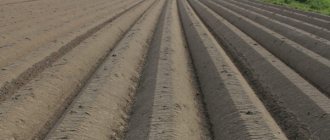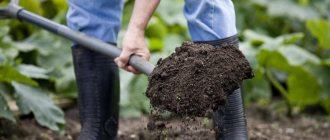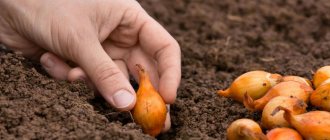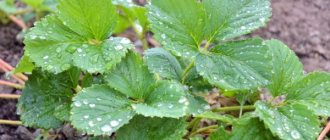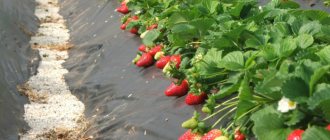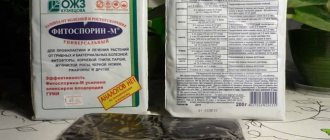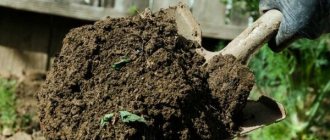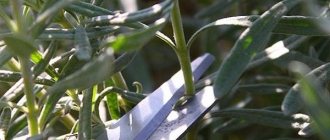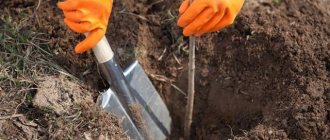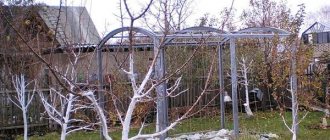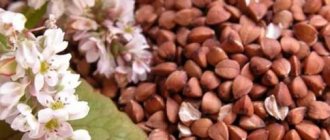What should the soil be like?
This fruit crop will grow in any soil. But if its composition or acidity is unsuitable, the berries will be tasteless, small, and the harvest will be small. Often the strawberries are watery, rotting, the leaves are small and yellowed. This greatly depends on the growing conditions. Therefore, every gardener should know what kind of soil strawberries like.
Note! Ideal conditions for growing this crop are a sufficient level of moisture - from 70 to 90%, access of oxygen to the roots, neutral acidity.
Not suitable for strawberries if the soil structure is clay, sandy, peaty and calcareous. The first one conducts air poorly, retains moisture, and freezes quickly. Due to lack of oxygen, plant growth will slow down. Sandy soil contains few nutrients, quickly heats up under the sun and loses moisture. Peat and limestone soils have an unsuitable composition for this plant.
The best soil for garden strawberries is sandy loam and loamy soil. These options meet the following requirements:
- lungs that allow air to pass through;
- do not accumulate moisture, but do not dry out quickly;
- contain essential nutrients;
- do not form a crust.
Heavy clay soil is not suitable for growing strawberries
Compound
If your garden bed does not have sandy or loamy soil, you can still plant strawberries. But you need to properly prepare the place. The land can be enriched by achieving the ideal composition for this crop. Organic matter, peat, and mineral fertilizers must be added. Each type of soil requires certain additives.
- Loamy soil is suitable for strawberries. Only fertilizers need to be added to it.
- Clay soil is not suitable for strawberries, as it is very heavy. But it can be lightened by adding river sand, ash, white clay or sawdust. You can also grow green manure in this place for several years, which will improve the condition of the soil.
- Sandy soil is enriched by adding fertilizers and white clay. You also need to add humus or turf soil to it.
- Calcareous soil has a lot of calcium, but it loses other minerals quickly. After watering, a dense crust forms on it. They enrich it by mixing it with loamy soil, adding potassium fertilizers and organic matter.
- Soddy-podzolic and other acidic soils contain little humus and minerals. Lime, dolomite flour, ash, nitrogen, potassium and phosphorus fertilizers are added.
Acidity
Strawberries prefer slightly acidic, almost neutral soil with a pH of 5.5-7. Then the plant will feel comfortable and give a good harvest. The pH level can be determined using litmus paper. You need to dip a bundle of soil into a glass of water. Then put litmus paper there. The acidity suitable for strawberries will be indicated by their coloring in any shade of blue or green.
If the soil is highly acidic, the root system will suffer. This soil contains little nitrogen, phosphorus, potassium, but an excess of iron and aluminum. The plant will develop poorly and may die. The following signs indicate increased acidity:
- reddish stains appear on the paths and between the beds;
- rusty coating on the surface;
- there are a lot of weeds such as horsetail, sedge, woodlice.
Acidic soil is enriched with lime. The process of changing acidity lasts several years. You will need to apply 40-50 kg of lime per hundred square meters, carefully digging up the area. But alkaline soil is not suitable for growing strawberries. It lacks nitrogen and phosphorus, but contains a lot of copper and zinc. In such conditions, the foliage of the plant suffers, curls, and falls off. Organic fertilizers are used to acidify the soil.
If there is high acidity, you need to add lime to the soil.
Conditions for growing strawberries
Often, novice gardeners encounter a number of problems when growing strawberries: sour, watery berries of irregular shape, sometimes even rotten or underdeveloped bushes. These troubles should be dealt with by properly organizing the growing space.
- It is not recommended to plant the plant on a southern slope (the snow will melt here early and the strawberries will remain absolutely defenseless against frost).
- It is worth choosing a place protected from the wind, but at the same time well lit.
- The bed should be flat, you can make a slight slope to the southwest.
- Every couple of years it is necessary to replant the crop to another place; a long stay in the same place can lead to plant diseases.
- You should not over-moisten the soil, but a lack of moisture can lead to irreparable consequences.
- The interval between bushes should be at least 50 cm. The closer the distance, the smaller the berries will be.
Soil for strawberries
It is generally accepted that garden strawberries are grown only in garden beds. But you can grow it even in your own apartment. In this case, the following conditions must be met:
- If you plan to grow from seeds, you need to keep the planting material in the refrigerator, after wrapping it in a damp cloth and a plastic bag.
- Prepare a spacious container with a drainage layer for planting.
- The best time for planting strawberry seedlings is autumn (August 15-September 20) or spring (early).
- The plant should not be placed on the balcony, as it is afraid of frost and cold.
- It is best to place the plant on windows located on the south side - they receive the most light. Additional light can be provided, since if it is not enough, plant growth slows down and the berries become tasteless.
- Organize artificial pollination: direct the fan towards the flowering bush or brush the flowers every day with a soft brush.
As it turns out, even home conditions are acceptable for growing strawberries with your own hands.
Soil preparation
If you properly prepare the soil for planting strawberries, they can be grown in artificial beds or at home in pots. You can buy a ready-made mixture, but it is better to use the following components:
- Mix universal soil in half with peat;
- add 3 tbsp. l. dolomite and coarse sand for every 10 liters of mixture;
- add a glass of wood ash;
- add 1/5 of sawdust soaked in urea.
You can also prepare fertile soil to replace it on the site. To do this, in the spring you need to remove a ten-centimeter layer of podzolic soil in the forest. Lay the turf in layers of 8 pieces, pouring slurry over each layer. Cover the resulting stacks with film with air holes. Periodically you need to check the soil and remove weeds. The soil prepared in this way will become suitable for growing this crop in 3 months.
Treatment
Proper preparation of the land for planting strawberries includes its disinfection. This will help get rid of insects and fungal diseases. To plant pots at home or for seedlings, it is recommended to bake the soil in the oven for half an hour. Several treatment methods are used for beds.
- Chemicals are effective but can harm plants. Therefore, add them little by little. The most commonly used are copper sulfate, potassium permanganate solution, and fungicides.”
- Biological drugs destroy pathogenic microorganisms. They are generally safe for plants. You can treat the soil with Baktofit, Fitosporin-M, Alirin-B, and Gamair.
- An agrotechnical method is the protection of fruit crops using repellent plants. Strawberries are protected from insects by marigolds, tansy, wormwood, garlic, and nasturtium. They are planted between rows.
Before planting, the soil must be treated to protect it from diseases and pests.
Additional information: To enrich the soil and protect it from harmful microorganisms, you can use vermicompost or earthworms. They absorb fungi and microbes, loosen the soil, and fertilize it.
Fertilizers
The quality of the strawberry harvest is greatly affected by soil fertility. It must contain at least 3% humus. These are nitrogenous organic compounds that are formed from rotting plant debris with the help of microorganisms and earthworms. Compost and aged manure are added - they are mixed half and half with the soil.
Be sure to also fertilize the strawberry bed with minerals. This is done before landing. Some fertilizers are applied before flowering and in the fall. The content of several substances is especially important.
Strawberries under agrofibre
- Phosphorus is necessary for the development of the root system. Superphosphate is added before planting strawberries at 35 g per m2.
- Potassium is important for normal growth. In calcareous soil there is little of it, add 15 g per m2.
- Magnesium is responsible for the production of chlorophyll. It is poorly absorbed if the soil acidity is low.
- With a lack of calcium, the foliage becomes lethargic. In order to have enough of this microelement, it is necessary to achieve a normal level of acidity.
- Boron is necessary for a good harvest.
Important! When applying fertilizers, you need to make sure that there is no excess chlorine, which is harmful to this crop.
The soil intended for strawberries must be fertilized
Predecessors of strawberries
It is not recommended to grow one crop in one place for more than 4 years. This leads to depletion of the soil, strawberries may become sick and will bear less fruit. Therefore, it is periodically replanted.
But you need to be careful not to plant it after crops that can cause harm. First of all, these are nightshades. Potatoes are especially harmful, as they can infect strawberries with rot and fungal diseases. Often, after potatoes, larvae of the Colorado potato beetle remain in the ground. After cabbage, zucchini, and Jerusalem artichoke, the soil left is too depleted of minerals, in which strawberries will not be able to develop normally.
Soil disinfection
Very often, spores of fungal diseases and other microorganisms can overwinter in the soil, which can cause various diseases of strawberries. Pest larvae also “wake up” as soon as the snow melts. How to disinfect the soil so that strawberries are not susceptible to diseases and invasion of “harmful” bugs?
Usually in the fall, the area where you plan to plant strawberries must be cleared of weeds. To do this, you can use herbicides such as Roundall or Ground. Weeds treated with these drugs will begin to die within a few days, and will finally die in about two weeks. To prevent pests and diseases, it is worth treating the soil with copper sulfate or Bordeaux mixture mixed with colloidal sulfur.
Depending on how depleted the soil is, complex mineral fertilizers mixed with organic fertilizers are applied. And only after that they dig up the area.
How to plant
It is better to plant strawberries in a sunny area. It is advisable that it be protected from drafts. The most suitable location is on a small southwestern slope. There should be no tall trees nearby that would shade the plantings. The area must be cleared of weeds, removing all the roots. It is better to arrange the beds in the direction from north to south, the distance between the rows is 70 cm, between the bushes - 30-40 cm.
The best time to plant strawberries is early autumn. At this time, the daytime temperature is about 20˚, the humidity is 70-80%, and the nights are cool. You need to prepare the bed for planting strawberries in advance. In summer, it is recommended to dig up the selected area well to a depth of 20-30 cm. If necessary, enrich the soil to achieve a composition suitable for this crop. Then add organic matter, phosphorus and potassium fertilizers. You need to prepare the bed 2 months in advance.
When planting strawberries in spring, digging is done in the fall. Weeds and stones are removed from the site. The soil is enriched with ash to reduce acidity, sand if it is clayey or black soil if it is sandy. In April you need to dig holes and pour sand on the bottom. Then mix the soil with fertilizers:
- potassium chloride;
- superphosphate;
- rotted manure;
- compost;
- ash.
In order for strawberries to take root, it is important to properly prepare the soil mixture for the beds
Mix everything well and fill the holes with prepared soil. After 1-2 weeks, strawberries can be planted. Before this, it is enough to moisten the soil by pouring a bucket per square meter.
Important! Fresh manure is not added to the soil. It needs to be aged and processed to get rid of weed seeds and parasites.
Peat for strawberries
Planting strawberries on agrofibre
Peat is an organic fertilizer made from the decomposed remains of animals and plants. It contains nitrogen and sulfur, which benefit any crop. For strawberries, this component is required only when grown on sandy and clay soils.
The use of peat for garden strawberries is possible both in autumn and spring. In its pure form, the product is used only for mulching. It must first be ventilated and mixed with sawdust. To reduce acidity, you need to add wood ash to the mixture. When adding peat to the soil, you will need to make compost. To do this, you need to make a compost heap, where you alternate layers of the substance with manure. You can supplement the composition with green mass and kitchen waste. From time to time the pile should be watered with superphosphate solution.
Peat for strawberries
You can fertilize strawberries with ready-made peat compost using two methods:
- During planting, place a layer 5 cm high in the prepared holes.
- While cultivating the soil, scatter the mixture (30 kg per 1 m2) and dig it up.
Advice! If it is not possible to improve the composition of the soil for strawberries with peat compost, you can purchase peat-based products in specialized stores.
Thanks to peat fertilization, the soil structure is significantly improved, the growth of strawberries and the root system is activated, and the number of berries increases.
Gardening tips
In order for strawberries to always please you with a good harvest, you need to use the advice of experienced gardeners when planting them.
- It is very important to check the acidity level of the soil in order to choose the right fertilizers to feed the plant.
- This crop loves moist soil, but stagnant water is harmful to it. Therefore, you need to choose a place where groundwater is no higher than 1 m. Otherwise, it is better to make a raised bed, otherwise the planted strawberries will die.
- This crop cannot be grown in pure peat, as it contains a lot of fluorine and organic matter. This leads to the development of various diseases. Therefore, a peat mixture with compost is prepared and used for fertilizer.
- To make it easier to get rid of weeds without using chemicals, you can cover the bed with black film. After 2-3 weeks, the weeds will die.
If you choose the right area for growing strawberries and prepare the soil, you can get good harvests. You just need to take care in advance about the required level of acidity, minerals, humus, and also monitor the amount of moisture.
Perlite for strawberries
Perlite is a volcanic rock formed by hydration. To obtain a porous material used in agricultural technology, the rock is heated. Then they are crushed and used for growing various crops.
The material significantly improves the soil structure, retains moisture and prevents the formation of crust on the soil surface. The use of the additive can be aimed at different purposes:
- the large fraction is used as drainage;
- covering the top layer of soil prevents mold;
- storage of bulbs and tubers;
- good material for germinating seeds.
As you know, not only open ground is used for growing strawberries. You can do this in a greenhouse or at home, where a pot is used instead of the usual bed. Recently, the Dutch method of growing strawberries has become popular. This method allows you to harvest year-round, does not require special investments and has many more advantages.
Perlite for strawberries
For cultivation, plastic bags or plastic containers are used, which are filled with perlite mixed with peat. This composition absorbs moisture and releases it only when necessary. Place the bags on the greenhouse racks at intervals of 50 cm.
In addition, perlite is good to add to soil for growing at home. Here it is also important to decide what kind of land is needed for strawberries. It is advisable to make the composition yourself, using forest soil, high-moor peat, perlite, humus and fine sand.
Note! To grow strawberry seedlings at home, you should not take soil from the garden, as it may initially be infected with a nematode.
Basic mistakes
- Adding too much peat. It is certainly beneficial for this plant, but should only be used in moderation to maintain water balance. Otherwise, uncontrolled proliferation of microorganisms and changes in the chemical composition will begin in the soil, which will deprive the crop or lead to the complete death of the crop.
- Growing in clay soil. It is better to find other places for planting strawberries, since such land is very difficult to improve even by artificial means; this is one of the most unsuccessful options.
- Adding excess sand. This procedure must be carried out in full accordance with the established dosages, otherwise the root system will be subject to constant drying out and overheating, and it is the most vulnerable part of the plant.
Landing rules
To speed up the process of rooting the crop, it is recommended to plant strawberries in the evening, or at another time, after waiting for a cloudy day. To plant, dig a furrow, which is dug under a stretched rope. The gap between the grooves should be at least 65 and no more than 85 cm (it all depends on the variety). There is about 20 cm between the plants themselves.
If you use your own planting material when planting, it must be healthy, use bushes no older than 2-3 years, from which they distinguished themselves with a high yield the previous year. To obtain high-quality planting material, it is recommended to remove flower stalks, because gardeners insist that in the same season you can get either a rich harvest or high-quality healthy seedlings from a strawberry bush.
In order to obtain planting material, you need to dig the first rosettes on the strawberry mustache into cups. It is from the first rosettes that you will get strong and healthy plants. By correctly calculating the time of planting, you can get ready-made seedlings in cups, when planting which you will only need to remove excess leaves (there should not be more than 3-4 of them). Planting bushes is carried out using the method already described.
Every 3-4 years it is worth renewing strawberry plantations, since this is the most optimal period, after which productivity indicators sharply decrease. And it’s very easy to grow young seedlings yourself.
Gardeners prefer this method because of the low costs, which will help increase the berry yield by almost half. Agrofibre is often used when planting in northern regions, where winters are long and frosts are frequent.
